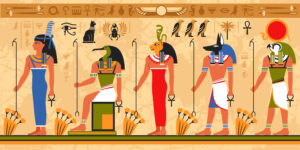One of the ways that some modern rabbis to try to contradict the Messiahship of Jesus is to claim that there are contradictions between the two different genealogies given about his ancestry.
For two thousand years there has been no documentation of the lineages of the house of Israel, which makes it easier for modern Rabbis to attack something that even the Sages didn’t. But let’s look carefully at the accusations made, and if there is any truth to them.
On page 89 of his book, rabbi Daniel Asor claims that he sent a letter to the Vatican, demanding that they solve the contradictions (as he calls them) between the genealogies of Jesus in the gospels of Matthew and Luke in the New Testament. Rabbi Asor continued to claim that Pope Benedict himself, since he was unable to provide an answer, resigned from his position as Pope.
We have no relation to the Pope, and not much sympathy for the Vatican either, or for the persecutions of our people by the Catholic Church, but we have even less patience for insanity.
Let’s begin. On page 15, the rabbi writes about the genealogies:
“The New Testament encourages its believers to avoid studying this subject altogether. In the letter of Paul, which is called ‘1 Timothy’ it says: “Nor to devote themselves to myths and endless genealogies, which promote speculations rather than the stewardship from God that is by faith.” Paul encourages his believers to continually strengthen their faith and for it to be as blind as possible.” He also claims: “We find that the genealogy of Jesus, as written in the gospels of the New Testament, is muddled up. Who was the real paternal grandfather of Jesus?… Matthew says that Jesus’ grandfather was Jacob, but in the gospel of Luke it says his name was Eli.”
First of all, not only has Rabbi Asor invented a prohibition here which doesn’t exist by taking a verse out of its context and twisting it, but if anyone will open the New Testament, they will be surprised that already on the very first page the New Testament itself details the genealogy of Jesus for the reader. And what issue was Paul really addressing in 1 Timothy 1? This time, let’s read the entire 4th verse:
“…Nor to devote themselves to myths and endless genealogies, which promote speculations rather than the stewardship from God that is by faith.”
Paul is not speaking about the genealogy of Jesus, but about the genealogies of the generations. New Testament scholars interpret Paul’s words as referring to stories and myths that people made up in order to give themselves a family ancestry, as well as arguments between Jewish families about which tribe they belong to. The truth is that in the section of verses 3-11, Paul addresses the believers who lived in Ephesus, and the name of Jesus is not even mentioned.
And now it’s time to prove that the contradictions exist only in the rabbi’s mind.
Rabbi Asor claims that Matthew and Luke both present the genealogy of Jesus in their gospels, but that the genealogies contradict each other, since they list completely different names. He bases this on his understanding that Joseph’s name is mentioned as the father of Jesus in both Matthew and Luke’s gospels, but the rest of the names are very different. It’s true that the genealogies are different from one another, and they do have completely different names, but this is because they are not the same genealogy. Matthew presents Jesus’ paternal genealogy, while Luke presents Jesus’ maternal genealogy. These are two different genealogies, and not the same one.
Rabbi Asor’s mistake is a due to the fact that he doesn’t know ancient Greek, the language of the New Testament, so he’s basing his claims on translations he reads. The fact that the rabbi incorrectly quotes in his book the name “Eli” instead of “Heli”, proves it. And as for the “contradiction”, the answer lies in the grammatical rules of ancient Greek, in which the text was written. In Hebrew (and English) we don’t use “the” in front of a person’s name. We don’t say ‘the’ Moti or ‘the’ Eitan. In ancient Greek the case is different. Every name in the Greek text of the genealogy presented by Luke appears with the prefix ‘the’, except for one name: the name of Joseph. From this, the reader understands that this is not the genealogy of Joseph, but of Mary.
To remind you, Jesus was Jewish, and according to Jewish rules, the name of the husband is mentioned here, after all, in Judaism, only male names are mentioned in genealogies. Do you think we just made this up? Go check and you will find that the same phenomenon existed in Judaism and in the Old Testament. For example, in Ezra 2 and Nehemiah 7. Additional support can be found in Luke’s words, who wrote: “being the son (as was supposed) of Joseph, the son of Heli…” (Luke 3:23)
In other words, we can understand that although Jesus was considered a “descendant” of Joseph, but in reality, he was a descendant of Heli. By the way, it’s interesting that even the Jerusalem Talmud, in Hagiga 2, refers to Heli as being the father of Mary.
To conclude, Heli was Mary’s father, while Jacob was Joseph’s father. Both were Jesus’ grandfathers, one from his mother’s side and the other from his father’s side. Both are descendants of King David.
Here is another contradiction the rabbi thinks he has found: “Matthew declares that Jesus was only 28 generations away from King David, while Luke in his writings shows 43 generations between Jesus to King David. What is the meaning of this contradiction?” Here too, there is no contradiction; Matthew,purposely doesn’t list all the generations, but chose to list only the names which were known. In the Old Testament we can see the same phenomenon in 1 Chronicles 5:29-40 and Ezra 7:1-5, both are genealogies of the priests from Aaron to Seraiah. In Chronicles the writer counts 22 generations as opposed to Ezra who counts only 16! The book of Ezra skips 6 generations, in order to emphasize its point: Ezra is a priest from the descendants of Aaron. Ezra 7:1 also calls Ezra “son of Seraiah” even though Seraiah was executed by Nebuchadnezzar in 586 BC, therefore, it’s impossible that Ezra was the direct son of Seraiah.
1 Chronicles determines that Seraiah’s son was Jozadak, who was exiled to Babylon most likely after his father’s execution. Similarly in Judaism, a grandson or any other descendant for that matter, could be called “son”. For example, when the Sages call the Messiah “Messiah son of David”, or, as the People of Israel are called “Sons of Abraham”, this is not direct fatherhood, but a biological reference.
This is also the reason why Matthew skips many generations; He simply wants to establish a biological link between the generations. The purpose of the genealogy was never to scientifically list each and every one of the generations, but to remove any doubt considering the family ancestry.
This brings us to another contradiction by Rabbi Asor, who claims:
“If we count the generations, we will find that Matthew was wrong in his counting! Where? From the Babylonian exile to Jesus, according to Matthew’s description, there are only 13 generations.”
It’s not Matthew that was wrong in his counting, but again, Rabbi Asor is trying to step into the shoes of a New Testament scholar. Matthew, who was Jewish, wrote to the Jews in a Jewish style. The first verse that Matthew writes in his book is: “The book of the genealogy of Jesus Christ the son of David, the son of Abraham.” Matthew divides the genealogy to three groups of 14 generations each. From Abraham, through David, and all the way to Jesus. This is in order to emphasize that Jesus is the “Son of David”. The name “David” in gematria equals 14. And in the counting of the generations, Matthew purposely counts the name “David” twice: at the end of the first group and the beginning of the second group, all in order to emphasize to the Jewish reader that Jesus is the Son of David; in words and also in numbers.
In conclusion, we could continue and go over more “contradictions” in the genealogies, but you already get the idea. And the truth is, that the Sages never tried to question Jesus’ place in David’s genealogy. This is a modern attempt and a desperate one in order to hide Jesus from you. Well then, at least now the Pope can return to his position.

“I removed a stone from my heart, thanks to your explanation”
My story: “Well done, really, how you respond to comments in a















